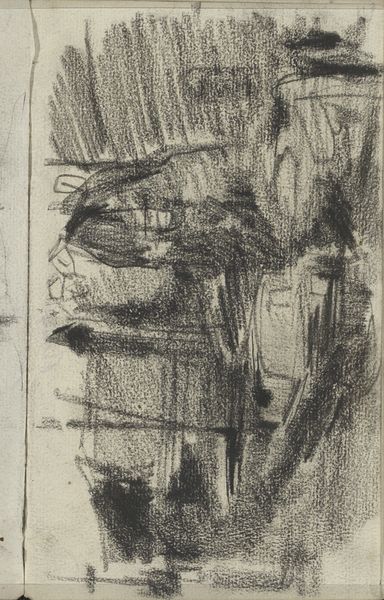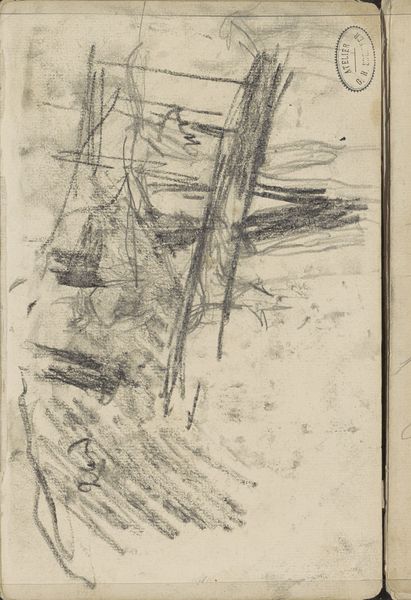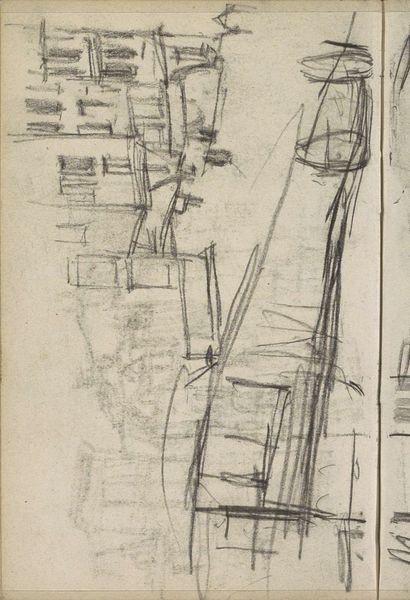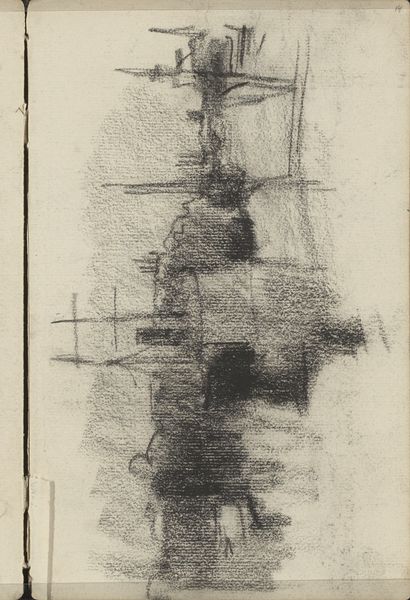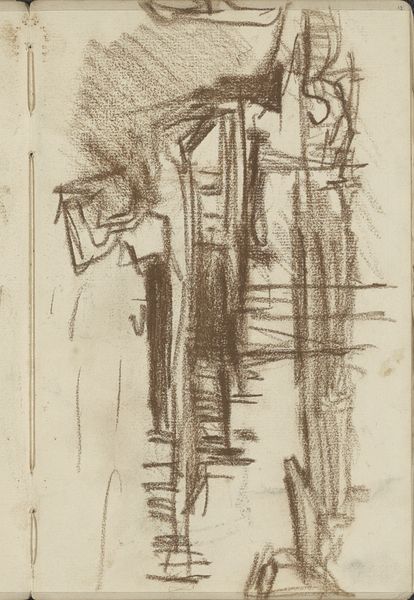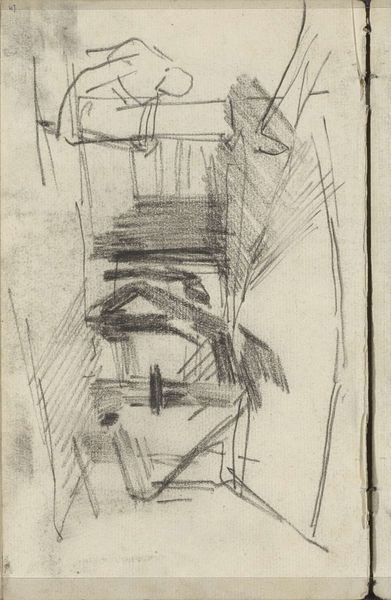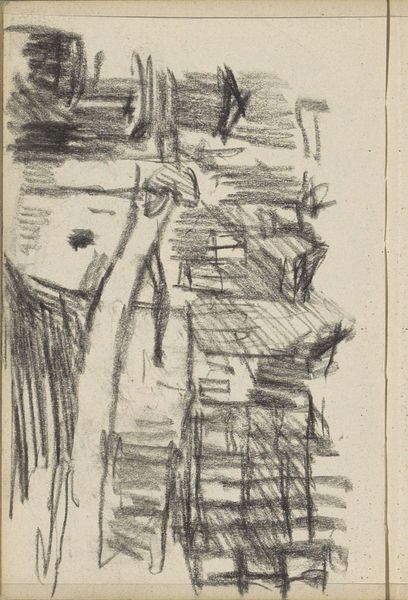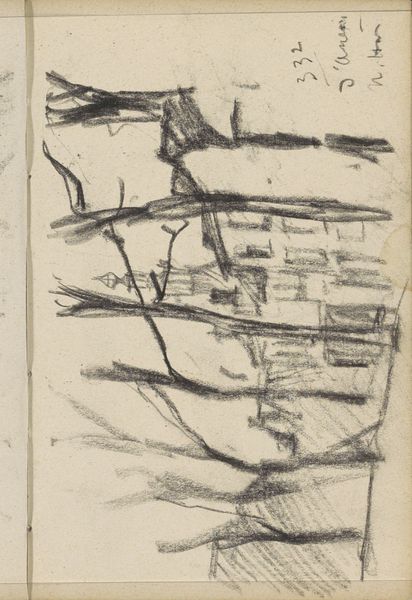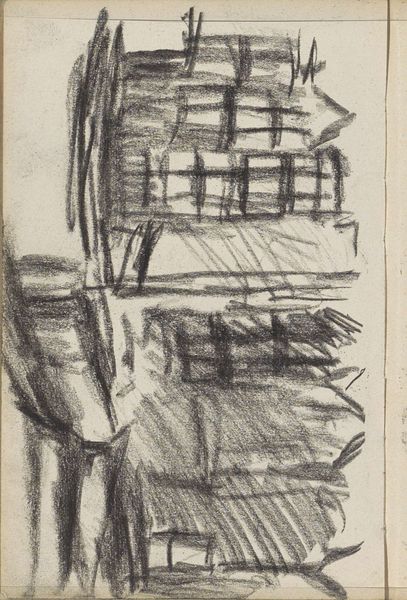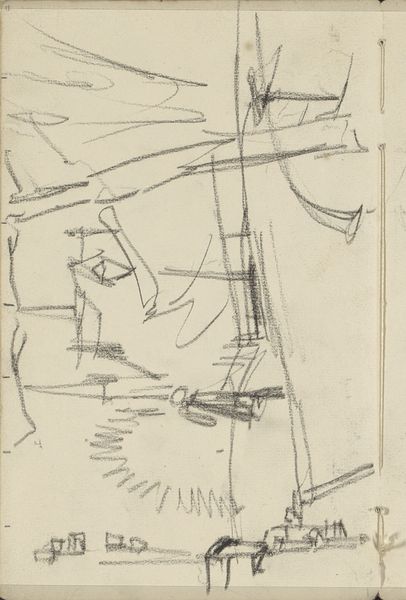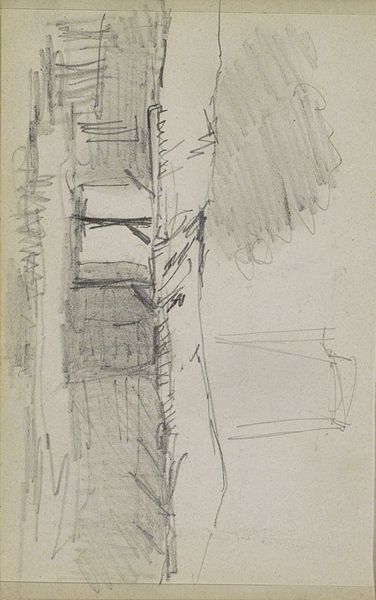
Copyright: Rijks Museum: Open Domain
Curator: Before us hangs "Aangemeerde schepen," or "Moored Ships," a drawing by George Hendrik Breitner, created sometime between 1886 and 1923. It is held here at the Rijksmuseum. Editor: Well, immediately I'm struck by the dramatic contrast of lights and darks. There’s a certain structural tension in the sketch. Is it complete, a fragment, or something in between? The geometric shapes almost become abstractions. Curator: The gestural marks, using charcoal and pencil, highlight Breitner’s approach to modern art, influenced by the conditions of urban life and industrial growth. The use of such commonplace materials shows the impact of material accessibility and mass production. Editor: Yes, the materiality enhances that raw quality. Observe how he juxtaposes those areas of intense shadow against the untouched paper; the negative space creates depth. Curator: Indeed, and Breitner wasn’t just depicting boats. He was interested in labor and production and that this particular type of boat allowed goods and resources to come into cities. The way he worked quickly and spontaneously also allowed him to catch the atmosphere of modern urban landscapes, focusing less on beauty and more on showing the gritty realities. Editor: Precisely! I appreciate how the starkness of the sketch focuses us on line and form. How those forms relate to one another becomes key to understanding the whole, regardless of historical context. It brings out a structural order underlying a seemingly chaotic scene. Curator: A convergence, then, of social context informing a powerful method of representation. The charcoal in "Aangemeerde schepen" echoes both labor and vision of a rapidly evolving culture. Editor: Absolutely. By analyzing the stark contrasts and fractured forms, we can distill what Breitner intended and understand his contribution to artistic form and visuality as an artist.
Comments
No comments
Be the first to comment and join the conversation on the ultimate creative platform.
